Key takeaways:
- Hospital ministry emphasizes compassionate presence and empathetic listening as vital components of spiritual care.
- Chaplaincy training is essential for developing skills like empathy, cultural competence, and conflict resolution, enabling effective support for diverse patients.
- Experiential learning through hospital shadowing deeply enriches a chaplain’s ability to connect with patients and families in vulnerable moments.
- Challenges in training include managing emotional burdens from patient stories and balancing theoretical knowledge with practical application in real-life situations.
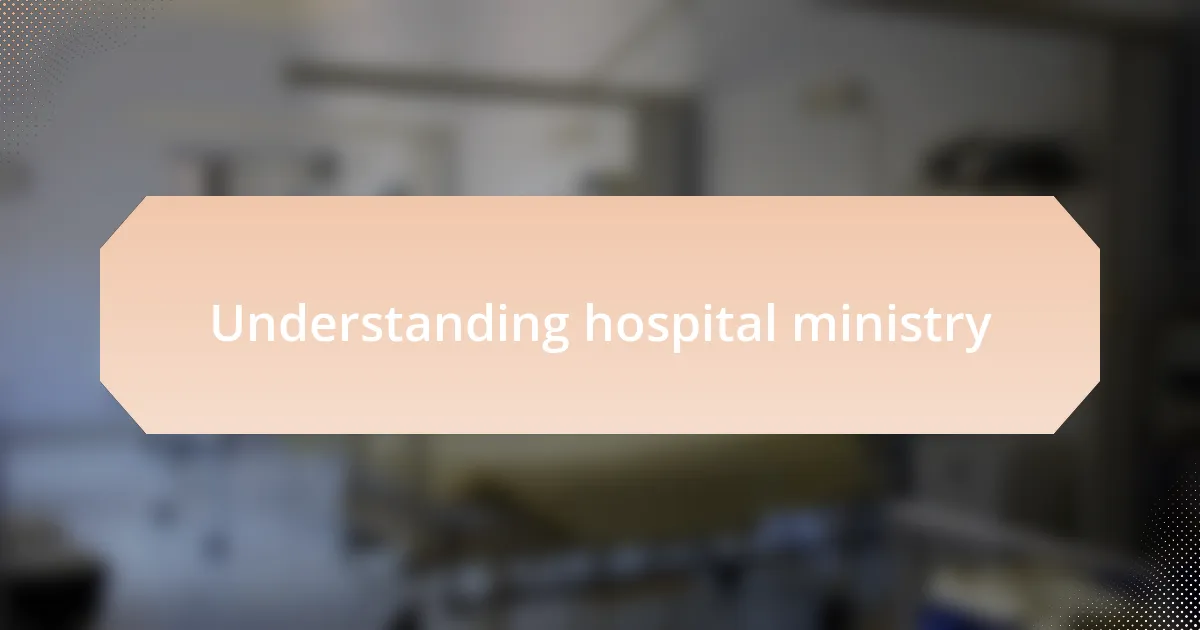
Understanding hospital ministry
Hospital ministry is a unique blend of spiritual care and pastoral support, often unfolding in the most challenging times of individuals’ lives. I remember my first visit to a patient; there was an overwhelming sense of vulnerability in the room. How do you approach someone who is filled with fear and uncertainty? I found that simply being present and listening provided immense comfort, demonstrating that ministry is often more about presence than words.
In the hectic environment of a hospital, it can be easy to overlook the profound impact of compassionate care. I’ve witnessed moments where a simple prayer or a gentle conversation brought a flicker of hope to someone grappling with despair. This experience taught me that hospital ministry isn’t just about providing spiritual resources but also about fostering a connection that acknowledges the human experience, creating a space for healing.
Moreover, hospital ministry is deeply rooted in empathy and understanding. Each patient’s journey is unique, and I often reflect on my role in helping them navigate their struggles. Have you ever considered how a few comforting words can change a person’s entire outlook? It’s a powerful reminder that, in the midst of clinical care, the human spirit still plays a vital role in the healing process.
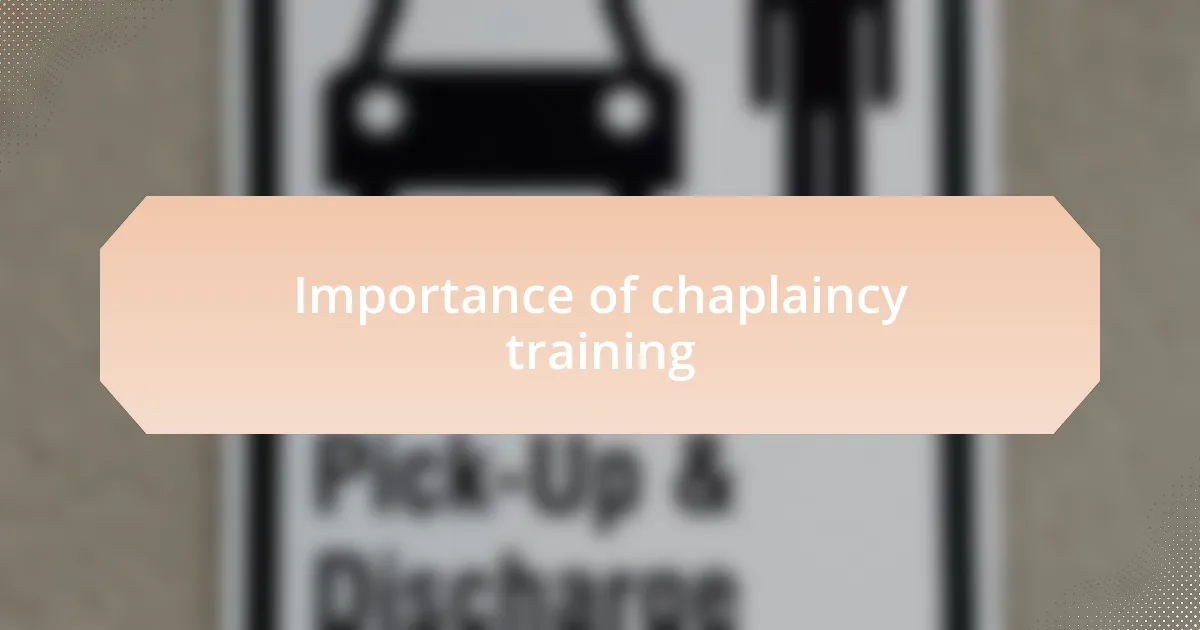
Importance of chaplaincy training
The importance of chaplaincy training cannot be overstated. It equips potential chaplains with the skills necessary to respond effectively to the diverse spiritual needs of patients and families. I’ll never forget the time a colleague shared a story about a family grappling with grief; the training helped him navigate that heart-wrenching situation with grace and empathy. Have you ever realized how vital such training can be when emotions run high?
Understanding the intricacies of different faiths and practices enhances a chaplain’s ability to provide tailored support. In my early training, I encountered individuals from various backgrounds, and it highlighted the significance of cultural competence. This experience reinforced my belief that embracing diversity isn’t just a checkbox; it enriches the conversations we have and the connections we build.
Moreover, chaplaincy training fosters self-awareness, encouraging future chaplains to explore their beliefs and biases. There was a moment in my training when I was asked to confront my own views on suffering. It was both challenging and enlightening. How can we truly support others if we haven’t grappled with our own perspectives? Recognizing our limitations fosters humility, allowing for deeper, more authentic connections in a hospital setting.
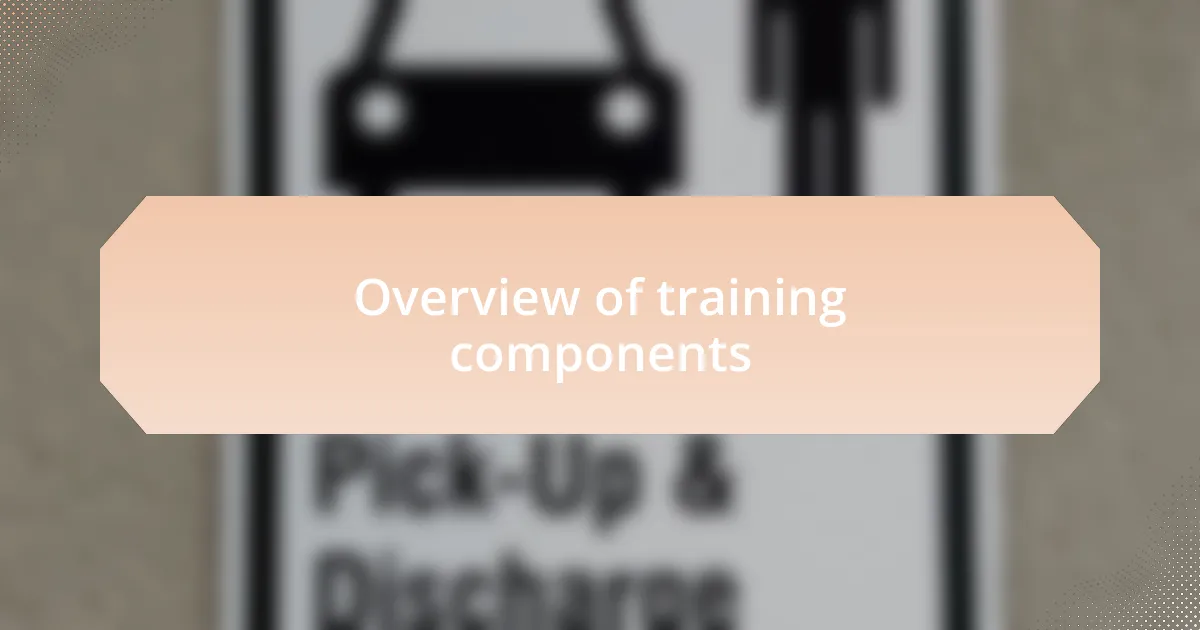
Overview of training components
The training components of chaplaincy are diverse and multifaceted, reflecting the complex roles that chaplains play in healthcare settings. We delve into subjects like pastoral care, counseling techniques, and theology, each one serving as a building block for a chaplain’s skill set. I still recall my first module on active listening; engaging with patients deeply changed my approach to how I support people during their most vulnerable moments.
Another critical aspect of the training involves ethical dilemmas and decision-making. These discussions often leave participants pondering their values and professional boundaries, which are crucial when navigating sensitive situations in hospitals. I remember a scenario that opened my eyes. We discussed a case involving end-of-life choices, and I found myself grappling with my own feelings about autonomy and care; it underscored how essential it is to think through these issues before facing them in real life.
Lastly, experiential learning, such as hospital shadowing, provides invaluable practical exposure. Walking alongside seasoned chaplains, I witnessed firsthand the profound impact they could have on patients and their families. Have you ever observed how a simple presence can transform a room? That’s the magic of chaplaincy training—it prepares us to be there fully, not just physically but emotionally and spiritually as well.
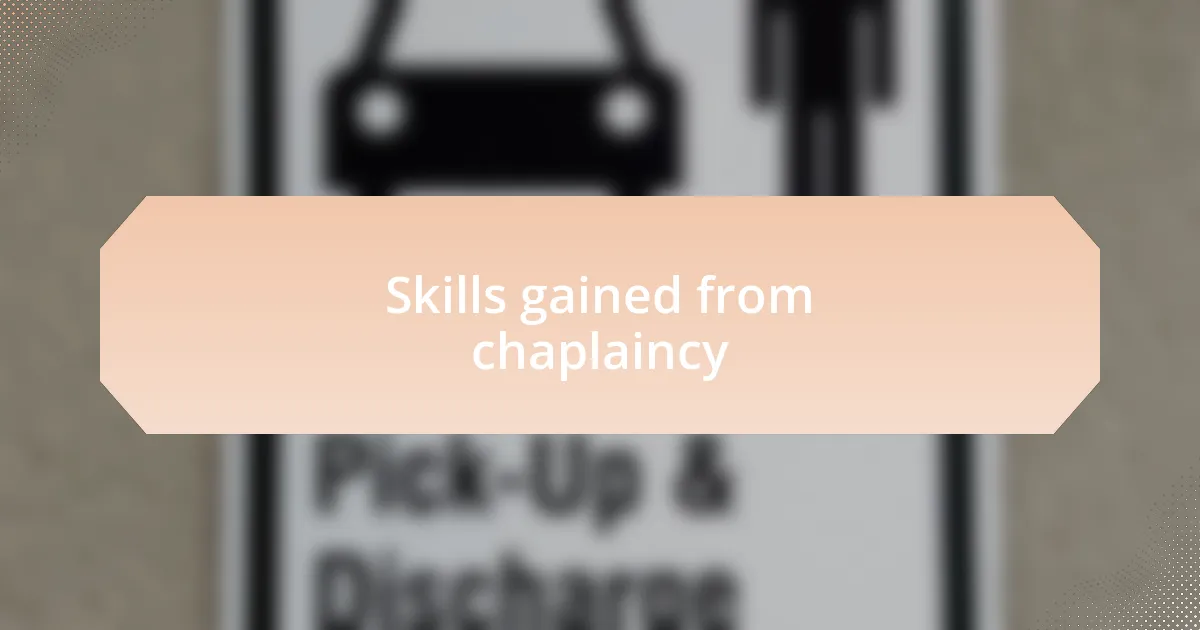
Skills gained from chaplaincy
One of the most significant skills I gained through chaplaincy training is the art of empathy. I remember a moment when I sat with a family facing the loss of a loved one. Instead of relying on what I thought I should say, I focused on truly hearing their stories. That experience taught me that sometimes, simply being present and understanding someone’s pain can offer more comfort than any carefully crafted words.
Conflict resolution is another invaluable skill I honed during my training. There was an instance where I facilitated a discussion between two family members who were at odds over treatment decisions. It wasn’t easy, but guiding them to shared understanding showed me how vital it is to create a safe space for open dialogue. This skill has not only enhanced my chaplaincy work but also positively influenced my personal relationships, teaching me to navigate disagreements with greater compassion and clarity.
Moreover, I developed a strong sense of cultural competence. Each visit to the hospital was a lesson in diversity, as I encountered individuals from various backgrounds and belief systems. One particular encounter with a patient who practiced a different faith challenged my preconceptions and pushed me out of my comfort zone. It reinforced my realization that being aware of and respectful toward different cultural contexts is essential in providing effective spiritual care. Have you ever found personal growth nestled within the stories of others? I certainly have, and it continues to enrich my approach as a chaplain.

Personal experiences in hospital ministry
During my time in hospital ministry, I had the privilege of sitting with patients during some of their most vulnerable moments. I vividly recall a conversation with a young mother who was grappling with a cancer diagnosis. As she spoke of her fears for her children’s future, I felt a deep sense of responsibility to hold space for her pain. In that moment, I realized that the connection we forged transcended words; it was about acknowledging her humanity and sharing a moment of authenticity amid uncertainty. How often do we shy away from raw emotions? In those interactions, I found that welcoming vulnerability was not just comforting for others, but it deeply enriched my own heart.
I also encountered the profound impact of rituals in hospital settings. One memorable experience involved participating in a small candle-lighting ceremony for a patient nearing the end of life. Families gathered, each person sharing precious memories while flickering flames symbolized love and remembrance. The room was filled with a mix of sorrow and warmth, reminding me of the delicate balance between grief and hope. Have you ever witnessed the power of a shared tradition? That day, I understood that these moments not only provided solace but also highlighted our shared humanity amid the chaos of illness.
Throughout my journey, the theme of hope has echoed in the halls of the hospital. I once spent time with a patient who had been bedridden for weeks, visibly discouraged. I decided to bring in a simple bouquet of flowers—nothing extravagant, just a small token of life. The way her eyes lit up upon receiving them was a gentle reminder that hope can bloom even in the midst of pain. Isn’t it fascinating how something as simple as a flower can shift perspectives? That interaction inspired me to seek out and cultivate small moments of joy, showing me that even in the darkest times, a glimmer of hope can spark resilience.
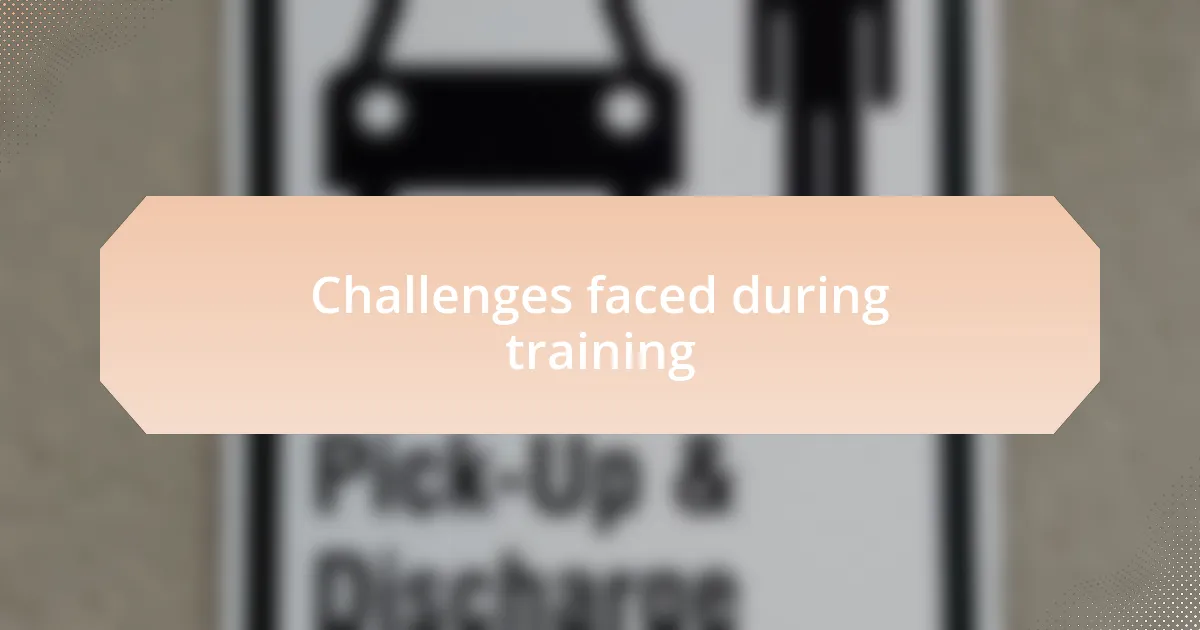
Challenges faced during training
As I navigated through chaplaincy training, one significant challenge I faced was the emotional toll of hearing deep-seated pain and trauma from patients and their families. There were days when it felt like an overwhelming weight on my heart, as I listened to stories that profoundly impacted me. How do you remain emotionally resilient while absorbing so much sadness? I discovered the importance of self-care practices to recharge and process these encounters, ensuring I could be present for others without losing myself in their struggles.
Balancing theoretical learning with practical applications also posed difficulties during the training. I often found myself questioning the effectiveness of what I’d learned in a classroom when confronted with the pressure of real hospital situations. Picture this: you’re in a room with a grieving family, and your mind drifts to the textbook definitions of grief stages. It’s almost paralyzing. I had to learn to trust my instincts and empathy beyond the confines of theory, realizing that the human experience often defies rigid categorizations.
Moreover, developing the skills to communicate with medical staff while respecting their routines was a delicate dance. There were moments when I felt like an outsider, trying to assert my role while also honoring their expertise. It made me reflect: how do you build bridges in such an environment? Through patience and collaboration, I began to foster relationships based on mutual respect, which helped me navigate conflicts and enhance the overall support provided to patients.